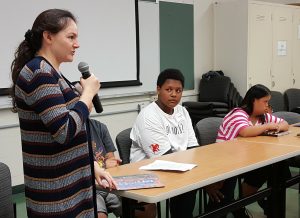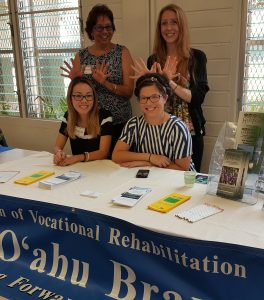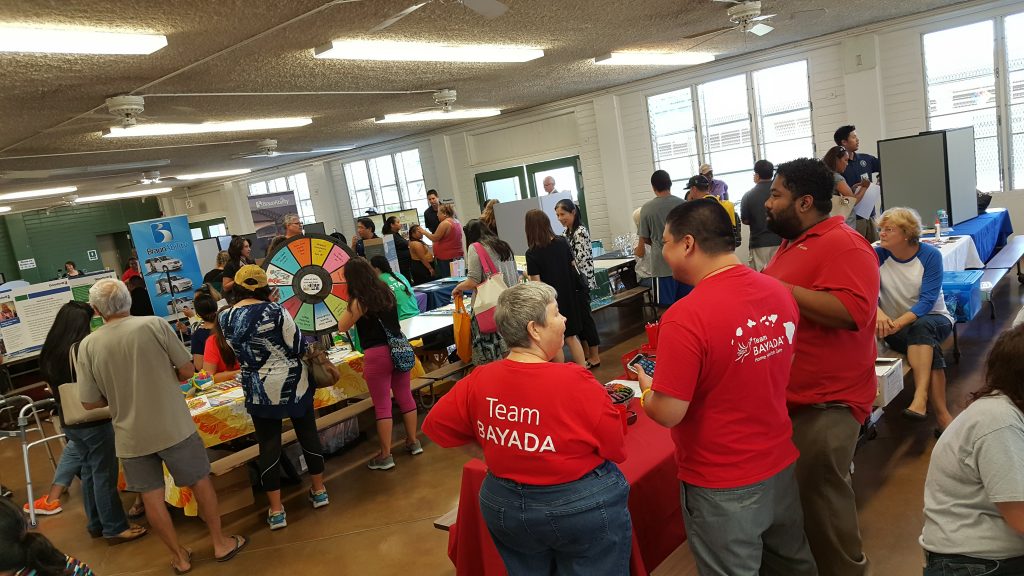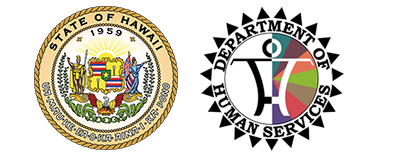
Youth panelists share their thoughts with attendees at the fair.
It was a Saturday morning, and a large classroom was packed with teary-eyed people. Normally this would conjure a somber image, but, on Oct. 22, it was a vision of inspiration – of students with disabilities, their parents and caregivers, and providers inspired to grow, learn, and act together. One student who presented to the crowd as part of a youth panel summed up a lesson for the day well: “Long after school is over, your transition is not.”
The Hawai‘i Department of Human Services Division of Vocational Rehabilitation and the Department of Education collaborated to bring resources into the community for youth with disabilities transitioning to adulthood. The free event targeted middle and high school students with special needs, their families, teachers, case managers, therapists, and anyone else in these students’ circles of support.
The fair was highlighted by a student panel and keynote presentation that proved to be enlightening, moving, and informative for both students and their supporters.

Enthusiastic DHS Division of Vocational Rehabilitation staff provided resources to attendees who may benefit from the division’s services and programs.
In addition to the student panel, Leolinda Parlin offered inspiration paired with practical guidance for youth and their parents and caregivers. Parlin spoke about how parents whose children are making the transition to adulthood are pioneers because of the significant technology changes that have occurred over the last two decades.
Parlin also highlighted that transition is not just for the youth in attendance but also for parents and caregivers. “As much as your kid is transitioning, you are transitioning too, from the center to a supporting role,” Parlin said. She noted that as children, care centers on the whole family, and as adults, that care will transition to person-centered care, where the youth themselves will need to provide information that had previously been requested from parents or caregivers.
Parlin provided attendees with a handful of “easy stuff” that youth and parents can do to prepare for the transition, including having a valid photo ID, preparing an emergency card or app, finalizing power of attorney paperwork, archiving all assessments, and getting health insurance squared away.
Beyond the practical transition pointers, Parlin also urged youth and parents to have some important conversations before or during the transition. She suggested having youth volunteer to explore career paths. She also recommended parents and children have a conversation about whether to pursue an education track that leads to a high school diploma or a certificate that proves completion of a special education program. She said the conversation is an important one because it allows a family to plan coursework according to the goal identified.
Parlin also had suggestions for provider partners, “Support the family. Support the hope. Be willing to talk about the elephant in the room.”

Providers, community organizations, and government agencies filled the Kaimukī High School cafeteria to provide resources to youth and their families.
The panel and keynote were definitely highlights of the day, but the event was made strong by the large amount of community organizations, providers, and government agencies that attended the fair. The cafeteria was filled with booths where attendees could get information, sign up for services, and even win prizes.
Conversations among families, providers, partners and agencies reverberated through the cafeteria building and brought Parlin’s parting words to life: “Be brave and be willing to take the first steps.” Whether the Footsteps to Transition Fair was a first step for families or one of many steps in their transition journey, there’s no denying everyone who attended was enriched by the event.
